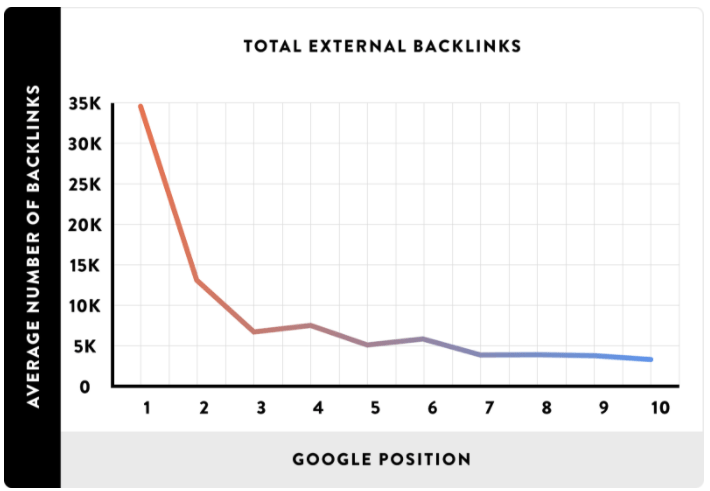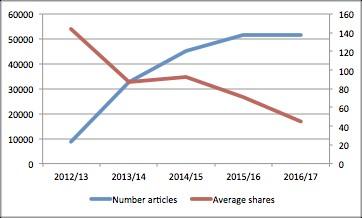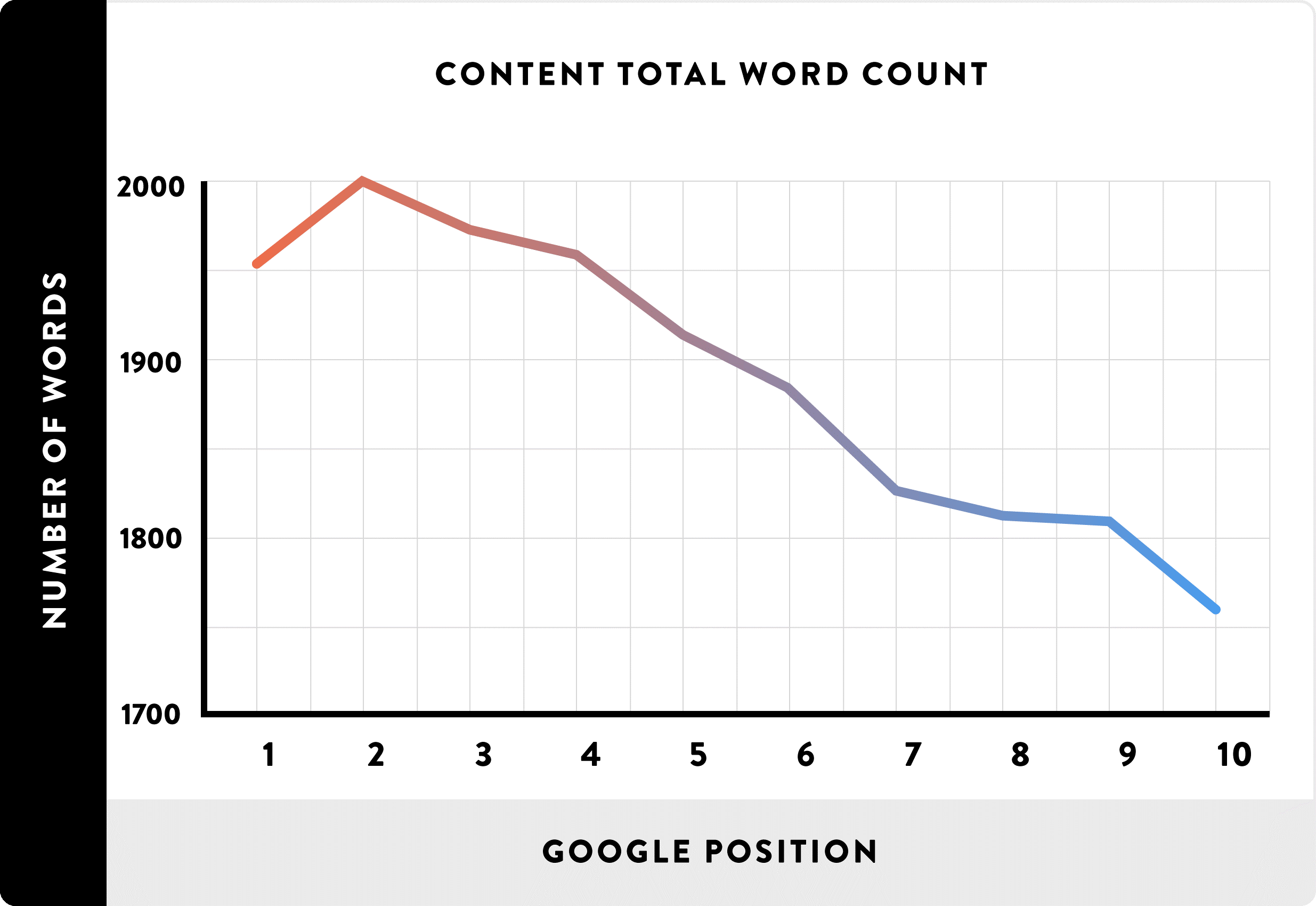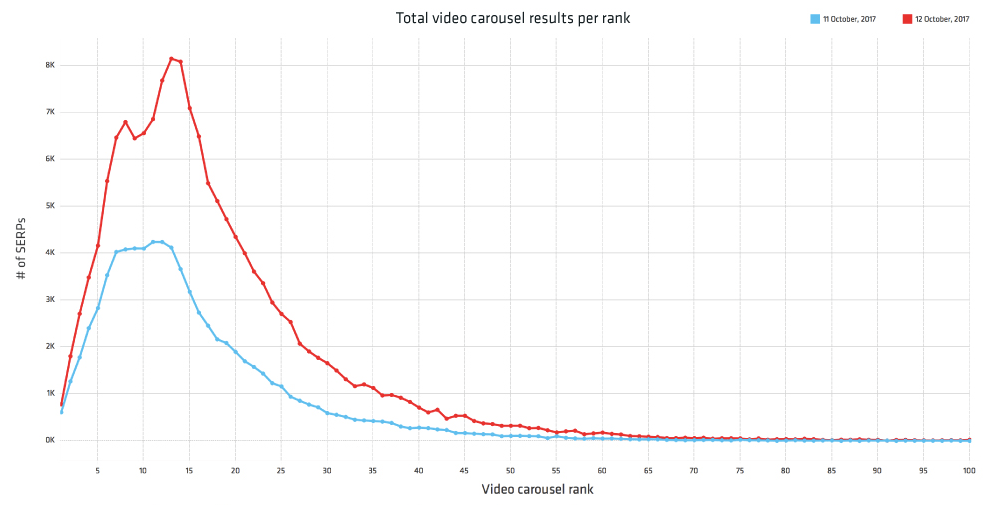
Are you aiming to make a seismic impact on your organic visibility in 2018?
Google and the wider industry have dropped many hints as to what will have the biggest impact in 2018. With all the noise, it can be difficult to see where to put your focus.
With that in mind, here’s our take on the seven most important truths you need to accept along with the biggest SEO mistakes you need to avoid in the coming year.
1. Google’s mobile-first index is already here
Originally announced in 2016, Google has already started rolling out their mobile-first index. This essentially means that Google will rank mobile versions of content, or whatever content would perform best on mobile devices, over non-mobile content. This has been a long time coming, especially since Google reported that more searches are made on mobile way back in 2015.
However, Google has confirmed that websites that are not ready for the mobile-first index won’t be moved across just yet. In other words, you have a bit more time to prepare your website.
Here are some focus points to help get you there for 2018:
- Move away from m-dot. Google recommends switching to a responsive design as opposed to maintaining a separate mobile website.
- Create consistent content for mobile and desktop users. This means not hiding or creating different content for specific devices.
- Check out Google’s mobile-friendly testing tool to make sure your site promotes a positive experience for mobile users.
- Whether it’s mobile or desktop, I cannot over-stress the importance of page load speed, and I’m positive that SEO experts around the world universally agree. Make sure you capitalise on site-wide opportunities such as browser-caching and image optimisation to boost content load speed on mobile. We all know it’s a ranking signal, but Neil Patel’s data below demonstrates a clear correlation between speed and position.
Site speed vs. search engine ranking, via Neil Patel
2. You can’t neglect the influence of machine learning
Briefly, RankBrain is Google’s machine learning system that measures how searchers interact with their results pages. As one of Google’s top three ranking signals, RankBrain helps it determine search rankings along with content and backlink quality.
In 2018, put focus into two areas that RankBrain analyses to help determine rankings – click through rates and dwell time.
Optimising your organic click-through rates can provide significant gains. High-ranking keywords with poor CTRs in the Search Analytics section of Google Search Console are vulnerable to losing their rankings. Prioritise keywords in the top 5 with CTRs below 10% and refine with more enticing titles and description tags.
Dwell time is the period between clicking on a page in the Google search results and returning back to the search results – very similar to bounce rate, but only taking the user’s return to the SERP into consideration. As an indicator to RankBrain of user intent and engagement, take the time to identify pages within Google Analytics with high exit rates from organic visitors. Address the quality of the content and intent match to better retain searchers.
3. You can’t over-rely on guest blogging for links
Above all, it’s important to remember that SEO is primarily about content and links. This isn’t going to change in 2018, and the recent study below confirms this.
Number of backlinks vs. Google position, via Backlinko
Content must be at the foundation of your link building strategy. If your content is bad, you won’t get links. It’s that simple.
If there’s one area of focus for 2018, it’s don’t rely heavily on churning out guest posting. While building links through guest posts still works and will continue to be effective in 2018, a return of one or two links for each article may not warrant the investment.
Instead, focus on creating content for your own site that has the potential to be picked up by influencers in your industry and adds real value. We’re drowning in content and it’s often to see dozens of blogs covering the same topic with the same level of depth. If you’re not adding anything new, why would people link to it?
Via Brandwatch
Use 2018 as the opportunity to start adding real value to your audience. Also take the time to:
- Identify existing content that has gathered great results, and make it better. If there’s an authoritative article on link building in 2018, why not turn it into an Infographic or an interactive piece? Both Buzzsumo and Ahrefs provide insight into what content has gathered decent traction. Export the data, and pick out popular pieces that could be updated or improved on.
- Scan knowledge bases and community hubs such as Quora. Listen out for common frustrations that your target audience shares, and create content to remedy them. Also consider investing in a social listening tool such as Hootsuite to gain further insight into what’s hot, and what’s your audience is talking about.
Traditional sources of link building are still relevant and still get results. So be sure to monitor and capitalise on native and competitor broken links and brand mentions.
4. It’s time to kill your thin, poor quality content
It’s always important to remember that Google’s objective is to show searchers the best result, and the algorithms keep changing to serve that objective. This will continue to be the case in 2018 and beyond.
There is a clear correlation between content depth and rankings, as shown in the findings of a study undertaken by Backlinko below.
If you’ve noticed key pages slipping down the rankings, it’s important to address depth, and whether it’s still relevant. It’s also very likely that someone else has done a better job at addressing the topic since you wrote it.
For in-depth pieces such as guides and articles, always aim for 2,000 words, and kill any content that’s old, irrelevant and doesn’t contribute anything to your website in terms of authority and traffic. This is known as pruning, and I highly recommend auditing legacy content to find pages that don’t make the grade (i.e., no little to no organic traffic or links). However, always attempt to improve the content before cutting away completely.
5. You must actively optimize for featured snippets
Nearly 30% of Google’s search results contain a featured snippet according to a recent study undertaken by Stone Temple. In addition, Stone Temple’s study revealed that featured snippets significantly impact the CTR’s of traditional organic search results below them.
More SERPs are being dominated by featured snippets, knowledge graphs and rich snippets as Google continues to generate a more visual information source beyond the traditional organic results. Throw text ads, product ads and image results into the mix, and your organic listings are going to slide further down the pages.
Here are some actions you can take to ramp up your content’s visibility in featured snippets:
- Identify page one rankings that currently don’t occupy a featured snippet in the SERP. This is your opportunity to jump in for some quick-wins.
- Update and optimise old but authoritative content on your website for featured snippets. Check out this study to find the sweet spot triggering featured snippets.
- Add Quora, Reddit and Answer the Public to your keyword research tool kit to identify questions that your audience is asking, and create new content around these.
6. Voice search shouldn’t be an afterthought
Voice search has been the one to watch since 2011, but the increasing adoption of virtual assistants and smart speakers have upped the game significantly. It’s been reported that voice-enabled smart speakers will reach 55% of US households by 2022.
If voice search isn’t on your agenda, take a look at these statistics:
- 60% of people using voice search have started in the last year
- 40% of adults now use voice search once per day
- Prediction: 50% of all searches will be voice searches by 2020
For those relatively new to voice search, here’s a few tips to best optimise your content for voice search:
- Buy a virtual assistant or smart speaker such as Google Home or Amazon Echo if you haven’t already to get a handle on exactly how they work.
- As previously highlighted, invest time in optimising content that currently ranks on page one to appear for a featured snippet.
- Use tools such as Answer the Public to identify conversation queries and create new content around these.
- Structure relevant content to include a question and answer. This would particularly apply to blog posts and FAQ content.
Google has hinted that they will be introducing better voice search reporting to Search Console. Hopefully we’ll see this come to light in 2018 along with more granular voice search reporting in Analytics, perhaps.
7. Video is a necessary investment
Video has exploded and well and truly really taken off in 2017. This is reflected in some mind-melting industry statistics, including:
- 45% of people watch more than an hour of Facebook or YouTube videos a week
- 1.3 billion people use YouTube
In a recent study by STAT, the number of video carousels appearing in Google’s SERPs has nearly doubled.
Video carousels per rank via STAT
What does this mean? Google is paying more attention to video and placing it in prime real estate on the SERPs. If you’re not currently embracing video marketing and incorporating it into your strategy, now is the time to step up your game.
There are many opportunities to explore for video, including:
- Explainer videos
- Product demos
- Video testimonials
- Video blogging
- Live video such as webinars and interviews
Don’t just stop with YouTube. Create and share video content on other platforms such as Vimeo and Dailymotion. Share on social media platforms Facebook, Twitter, and LinkedIn as they continue to better accommodate video in user feeds. Above all, take more opportunities to drive visibility and attract natural links with video.
How is your SEO strategy evolving in 2018?
About the author
Tom Whiley is Head of Demand Generation at e-days Absence Management, a global SaaS solution providing simple employee holiday and absence tracking.













